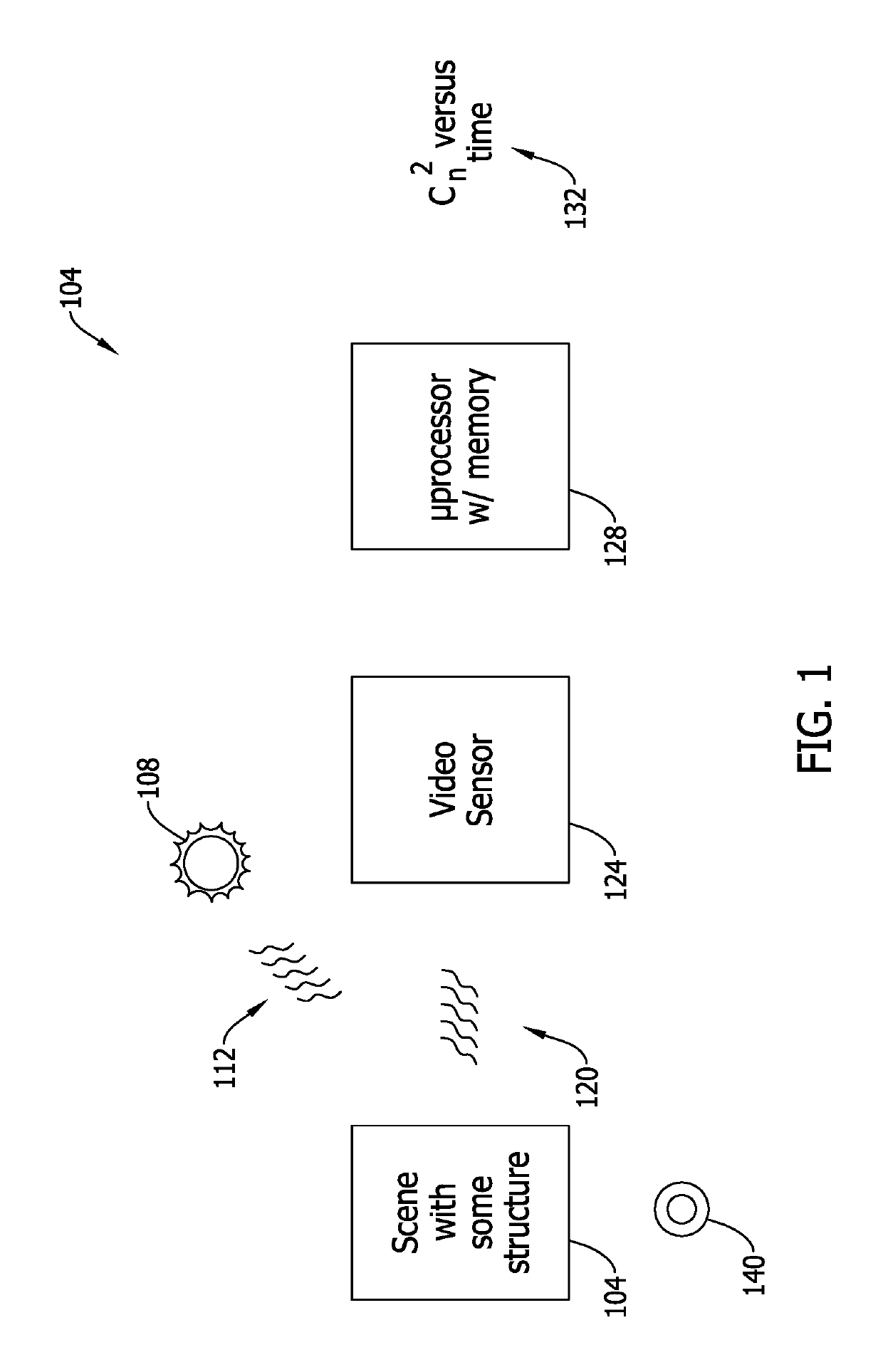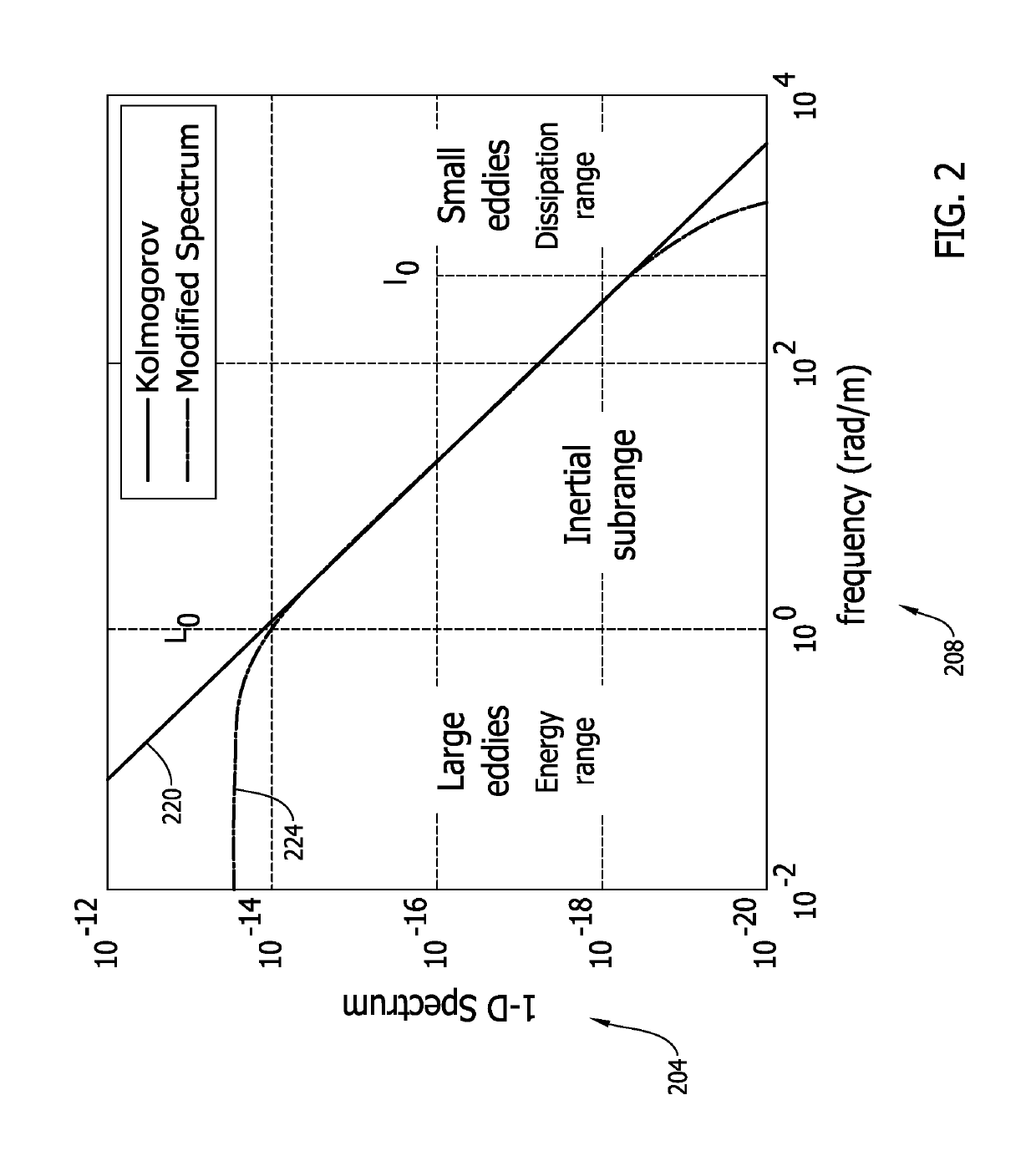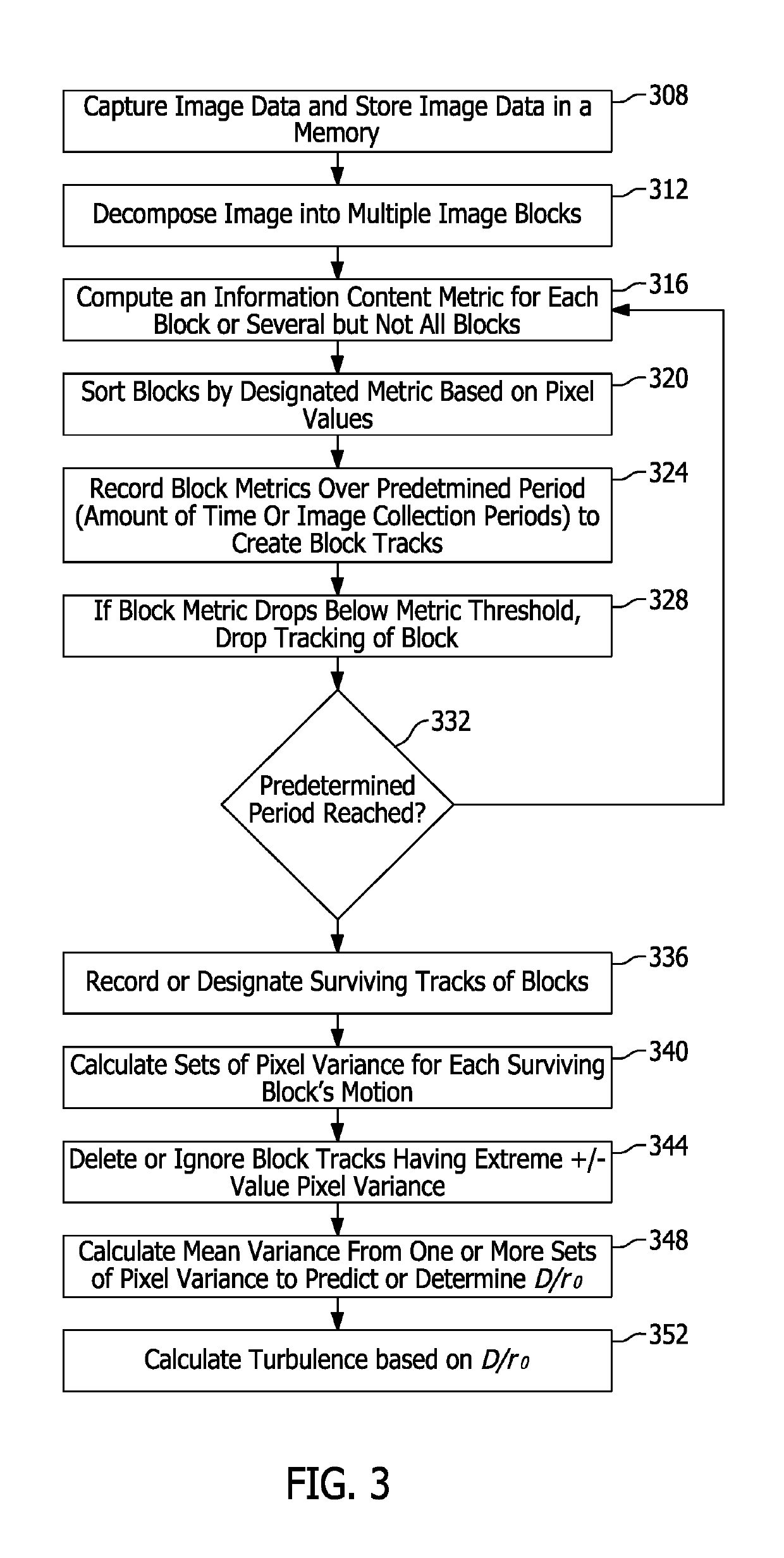Passive method to measure strength of turbulence
a passive method and turbulence technology, applied in the field of turbulence measurement, can solve the problems of reducing the ability to make remote sensing measurements, affecting the viewing resolution of atmospheric turbulence, and affecting the quality of atmospheric turbulence, so as to reduce the cost and simplify the instrumentation
- Summary
- Abstract
- Description
- Claims
- Application Information
AI Technical Summary
Benefits of technology
Problems solved by technology
Method used
Image
Examples
Embodiment Construction
[0036]To overcome the drawbacks of the prior art, a new approach is disclosed for turbulence analysis and measurement. This invention significantly simplifies field measurements and only uses a video camera or any other image capture device, a computer or computing device, with memory storing non-transitory machine executable code, to process data that effectively replicates the ability of a scintillometer over more than two orders of magnitude of Cn2. After a latency period of 30-40 frames of image data collection, data can be provided every frame up to the limit of the turbulence time scale, typically 1 msec for visible light.
[0037]This innovation uses the combination of the STL spatial / temporal characterization (STSC) of turbulence and the high confidence block shift (HCBS) methods to calculate turbulence based on image data, such as data from 30 or more images captured by an image capture device. The combination of these method is reliable and replicates the results from a scint...
PUM
 Login to View More
Login to View More Abstract
Description
Claims
Application Information
 Login to View More
Login to View More - R&D
- Intellectual Property
- Life Sciences
- Materials
- Tech Scout
- Unparalleled Data Quality
- Higher Quality Content
- 60% Fewer Hallucinations
Browse by: Latest US Patents, China's latest patents, Technical Efficacy Thesaurus, Application Domain, Technology Topic, Popular Technical Reports.
© 2025 PatSnap. All rights reserved.Legal|Privacy policy|Modern Slavery Act Transparency Statement|Sitemap|About US| Contact US: help@patsnap.com



